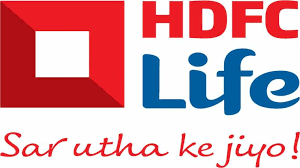
HDFC Life Insurance Company is a joint venture between HDFC Ltd, (Formely HDFC Standard Life Insurance Company Ltd) one of India’s leading housing finance institution and Standard Life Aberdeen, a global investment company. Established in 2000, HDFC Life is a leading long term life insurance solutions provider in India, offering a range of individual and group insurance solutions that meet various customer needs such as protection, pension, savings, investment and health. The company has around 40 individual and 15 group products in its portfolio, along with 10 optional rider benefits, catering to a diverse range of customer needs. HDFC Life continues to benefit from its presence across the country with 412 branches and additional distribution touch points through several partnership. The partnerships comprise 265 bancassurance partners including NBFCs, Micro Finance Institutions, Small Finance Banks, etc and 39 partnerships within non-traditional ecosystem. The company is also strengthened by a strong base of financial consultants. In Fiscal 2016, the company established its first international wholly owned subsidiary in the UAE, HDFC International Life and Re company Ltd, to operate its reinsurance business. HDFC Life distributes its product through a multi channel network consisting of Insurance agents, Bancassurance partners (HDFC Bank, Saraswat Bank, RBL Bank), Direct channel, Insurance Brokers and Online Insurance Platform. India currently has around 605 million people below the age of 25, and 225 million in the age group of 10-19 years. The insurable population is expected to touch 750 million by 2020 and life expectancy at birth to be 74 years. The average Indian age by 2020 will be 29 years as against 40 years in the US, 46 years in Europe and 47 years in Japan. The proportion of population above the age of 65 years is expected to constitute 9% of the population by 2035 and 15% of the population by 2055, compared to 6% in 2015. This provide a huge opportunity to tap the retrial space. Similarly the portion of population between 20-64 years is expected to constitute 61% of India’s population by 2035 as compared to 56% in 2015. This provides opportunity to pitch long term savings and investment plans. This changing demographic profile means that innovation in products, distribution and on boarding, is of utmost importance to be able to provide a superior customer experience. These factors also highlight the wide array of growth opportunities for the life insurance industry. As compared to other developed economies, India remains vastly under- insured, both in terms of penetration and density. The penetration of life insurance has increased from 1.5% in the year FY 2008 to 2.8 % in FY 2018; with a high of 4.6 % during FY2010. This presents a huge opportunity to penetrate the underserviced segments, with evolution of the life insurance distribution model and rising awareness about need for life insurance. ‘The protection gap’ in India is amongst the highest in the world at 92.2% , which has increased 4x in the last 15 years. This presents a unique opportunity to offer systematic long term savings vehicles as well as protection products covering both mortality and longevity risks. The changing demographic profile in addition to the emergence of nuclear families and limited social security has led to several new saving products being launched within both the traditional and linked segments. The sum assured as a percentage of GDP is at 6% for India (one of the lowest in the region) thus reiterating the tremendous potential of life insurance. The share of financial savings as a percentage of household savings has been increasing. This, coupled with life insurance being increasingly viewed as a preferred savings instrument, bodes well for the long term growth story of the life insurance industry. The share of financial savings, as percentage of household savings, increased from 33% in FY 2013 to 42% in FY2018, while the share from life insurance as a percentage of financial savings increased from 18% in FY 2013 to 25% in FY 2018.The life insurance industry has undergone several changes which includes introduction of new regulations around protection of policy holders interest 2002, licensing of corporate agents (2002), linked products circular ( 2010), linked and non-linked products (2013), registration of corporate agents ( 2015), management of expenses (2016) among others. This has led to recalibration of the distribution models along with the balancing of the product mix. During FY 2019, life insurance industry grew by 11% to garner Rs 2,147 billion of new business premium against Rs 1,939 billion in the previous financial year. The private insurers posted growth of 12% in individual business while group business saw strong growth of 36% . Private insurers continued to further consolidate market share in FY 2019 with the fifth consecutive year of greater than 50% share of the market. The market share of the private insurers has increased from a low of 36.5% in FY 2012 to 58% in FY 2019 based on Individual WRP. India’s life insurance sector is the biggest in the world with about 360 million policies which are expected to increase between 12-15 % over the next five years. The country’s insurance market is expected to quadruple in size over the next ten years . The overall insurance industry is expected to reach US$ 280 billion by 2021. Gross premiums written in India reached Rs 5.53 trillion (US$ 94.48 billion) in FY 18, with Rs 4.58 trillion (US$23.38 billion) from life insurance and Rs 1.51 trillion (US$ 23.38 billion) from non-life insurance. In FY 19, premium from new life insurance business in India increased 3.66 % Y-o-Y to Rs 1.09 trillion (US$ 15.46 billion) . The Indian insurance market is a huge business opportunity waiting to be harnessed. India currently accounts for less than 1.5% of the world’s total insurance premiums and about 2% of the world’s life insurance premiums despite being the second most populous nation. The country is fifteenth largest insurance market in the world in the terms of premium volume, and has the potential to grow exponentially in the coming years. The government of India has taken a number of initiatives to boost the insurance industry. In September 2018, National Health protection scheme was launched under Ayushman Bharat to provide coverage of up to Rs 5,00,000 to more than 100 million vulnerable families. Over 47.9 million farmers were benfitted under Pradhan Mantri Fasal Bima Yojana in 2017-18. The strategy of HDFC Life Insurance has been profitable growth. It has been to defend company’s turf in terms of distribution as well as to chart new territories both in term of how company sell and what it sell. In terms of how it sell, company have been very successful in signing up new partnerships as well as ring fencing its existing relationship. Company made tie up with Vijaya Bank which has now merged in Bank Of Baroda. Some more tieups are in pipeline in terms of the emerging ecosystem in the space like fintech, digital platforms. On protection mix policies company have been market leader since last 5-6 years. The inflection point on protection has to happen when India’s per capita GDP goes up from about $2000 . No one would argue that when an average Indian has something to protect, he/she will start looking for protection products. HDFC Life is very well poised in catching that demand as and when that inflection point start happening. So company will continue to come up with product innovation as well as sell protection policies through non-traditional channels as well. Company’s strategy works on both product innovation and distribution strategies. HDFC Life has tied up with a number of banks and NBFCs. It have tied up with small finance bank such as Ujjivan, Utkarsh and Capital SFB. Company have very strong presence in their respective market, which help company to reach out customers. For instance, in the East they have tie up with Bandhan bank as a large partner, in the south they have Ujjivan . The company’s value for new business (VNB) growth has also doubled in this quarter. The 104% growth in VNB has been on the back of several things; one is the overall growth across the channels. Company’s agency channel grew by 121%. Overall its proprietary channels grew by 90%, its direct channel grew by 70%. HDFC bank cahnnel grew by 44% . online channel also grew very well. Company had lower cost of acquisitions. In last 6 years company have been steadily hovering somewhere around 20% mark on return on embedded value. (ROEV). This shows company’s business is build on very strong foundation of profitable growth and not just top line growth for the sake of growth. The operating embedded value comprises of the unwinds and so the quality of the bad book is important and this is on the back of very healthy levels of persistency that company have been showing. On standalone base the total premium collected by the company during the year witnesses an increase of 24% from Rs 23,564 crore in FY2018 to Rs 29,186 crore in FY 19 due to healthy growth witnessed in new business especially in single premium which grew by 121% from Rs 1,322 crore in FY 2018 to Rs 2,925 crore in FY 2019. During FY 2019, the company has added nearly 9.95 lakh new policies to its individual portfolio. The company’s continued emphasis on better quality of business sourcing, customer retention and persistent efforts in customer education has resulted in increase in renewal premium (individual) by 16% from Rs 12,130 crore in FY 2018 to Rs 14,109 crore in FY 2019. The company continues to lead in terms of group business premium, which has seen a robust growth of 35% increasing from Rs 5,491 crore in FY 2018 to Rs 7,432 crore in FY 2019. This growth has been on the back of protection led credit protection business and steady performance in traditional group term insurance and fund based business. The increasing portion of protection business across individual and group segment over the last few years has contributed to the increase in reinsurance ceded over this period. The reinsurance premium ceded increased by 35% from Rs 193 crore in FY 2018 to Rs 262 crore in FY 2019. The company pays commission to its distributors on the premium income collected during the period. Commission rates on select products were revised in conformity with limits specified under IRDA regulations 2016 effective from April 1, 2017. The commission expenses increased from Rs 1,075 crore in FY 2018 to Rs 1,118 Crore in FY 2019, an increase of 4%in line with the underlying business growth, incremental commission rates and change in product mix. The increase in single premium commission ratio is in line with increase in group business. According to company’s strategy, the company has been working to ensure diversification and strengthening its distribution mix and make efficient use of technology to ensure ease of purchase for the customer. As a result of growth in total premium there is better absorption of fixed costs resulting in reduction in operating expenses to total premium ratio from 13.5% in FY 2018 to 13.2% in FY 2019. In absolute terms, the operating expenses increased by 21%, driven by increase in costs related to employees, marketing, operational,IT and business development expenses, in line with the growth in business. The net profit rose by 15% from Rs 1,109 crore in FY 2018 to Rs1,277 crore in FY 2019 . There was one time impact of realized loss of Rs 29 crore, excluding which PAT grew by 18%. The company also paid dividend of Rs 396 crore during FY 2019 compared to Rs 329 crore paid in FY 2018. Company’s income from operation increased from Rs 102.50 crore in FY 2011 to Rs 1615.30 crore in FY 2019 On standalone bases. During this period net profit of company grew from Rs -99 crore to Rs 1,277 crore. On consolidated bases company income from operation from Rs 461.15 crore in FY 2014 to Rs 1,645.93 crore in FY 2019. During this period company net profit grew from Rs 447.23 crore to Rs 1,277.93 crore. Company sounds good on both fundamentals and financials. So I prefer buy call on HDFC LIFE INSURANCE COMPANY LTD.

